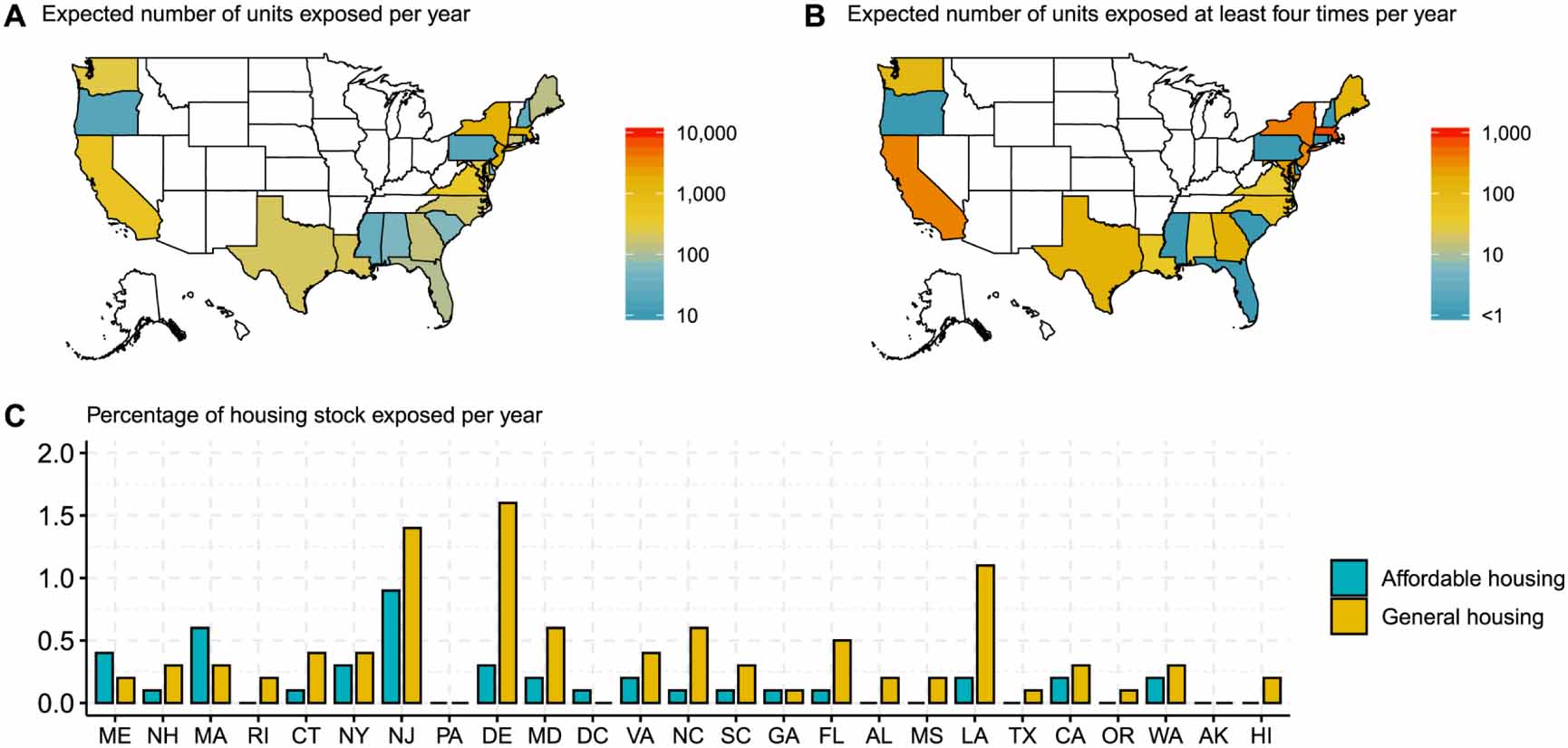The estimate is triple the number of housing units at risk only 20 years ago. By 2050, more than 10,000 affordable units nationwide were projected to face repeated flooding four times per year or more.
“Flooding can damage buildings and be very disruptive to the residents who live in them; even low levels of flooding can damage belongings, disrupt electrical equipment, and potentially expose residents to contaminated water and mold,” said Lara Cushing, assistant professor of environmental health sciences at the UCLA Fielding School of Public Health. “Many cities are already struggling with an affordable housing crisis. Our study highlights that climate change will only make this worse unless significant investments are made.”
The report, published by the peer-reviewed journal Environmental Research Letters, was managed by the non-profit research group Climate Central, based in Princeton, N.J. Communities expected to be at the most risk include three cities in the San Francisco Bay Area, and multiple coastal regions in the northeastern United States, from New England to the Delaware and Chesapeake bays.
In California, for example, the towns of Corte Madera, Foster City, and Suisun City all face significant risk, while on the east coast, New York City; Boston, Cambridge, and Quincy, Massachusetts; Atlantic City, Camden, and Hoboken, New Jersey; are all at risk. Farther south, Crisfeld, Maryland; Norfolk and Portsmouth, Virginia; Charleston, South Carolina; and Miami Beach, Florida, are all in the top 20 of cities most exposed to flooding due to sea level rise.
As just one example, in Atlantic City, by 2050, more than half – 52% – of the current affordable housing stock could be at risk, the researchers found.
“The findings make clear a reality about climate change,” said Rachel Morello-Frosch, UC Berkeley professor of public health and environmental science, policy and management. “The impact of sea level rise, for example, will fall often on vulnerable residents many of whom are already living at or below the poverty line. We need to preserve and increase the supply of resilient affordable housing in coastal areas to ensure community resilience against the impacts of sea level rise and increased flooding events.”
Methods: To assess the exposure of affordable housing (and of general housing for comparison), the team used the core methodology of Kulp and Strauss (2017) to examine the expected annual exposure of housing units—the probability of the unit being exposed to at least one coastal flood-risk event in a given year.
The authors introduce a new metric, expected annual flood-risk events, equal to the total expected number of flood-risk events each building/unit could experience. Both of these quantities can be made unconditional to sea level rise (SLR) sensitivity to greenhouse gas emissions by integrating across the distribution of potential SLR, given an emissions scenario.
This analysis is performed by refining a digital elevation model (DEM) to reference local high tide and enforcing hydrological connectivity given any water height threshold; integrating SLR projections and flood height exceedance probabilities to generate a function estimating the annual and daily probabilities of at least one coastal flood above a height threshold in a given year; and applying this function to each building and year of interest, from which expected annual exposure and flood-risk events can be computed and aggregated within any administrative area. The inputs, models, and outputs of the analysis are illustrated in Figure 1 and described in detail in the report.
Funding: The research leading to these results has received funding from the JPB Foundation, Kresge Foundation, and California Strategic Growth Council (#CCRP0022).
Data Availability Statement: The data used for analyses can be explored through an interactive map produced by Climate Central.
Citation: “Sea level rise and coastal flooding threaten affordable housing,” Maya K Buchanan et al 2020 Environ. Res. Lett. 15 124020
https://iopscience.iop.org/article/10.1088/1748-9326/abb266
The UCLA Fielding School of Public Health, founded in 1961, is dedicated to enhancing the public’s health by conducting innovative research, training future leaders and health professionals from diverse backgrounds, translating research into policy and practice, and serving our local communities and the communities of the nation and the world. The school has 631 students from 26 nations engaged in carrying out the vision of building healthy futures in greater Los Angeles, California, the nation and the world.



